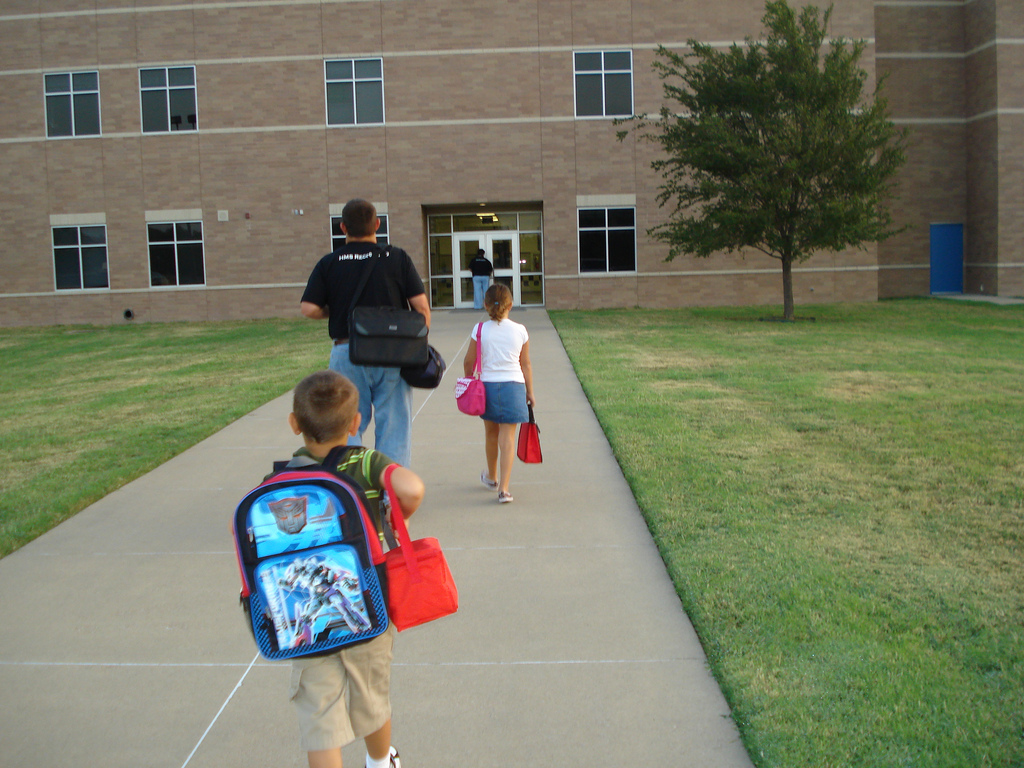by Brendan Wrigley | @brendan_wrigley
“School is pretty normal, which I’m happy about, because it hasn’t always been. I’ve got a few friends who are really nice and supportive, and the teachers are great.”
It’s a Wednesday night and in between study and guitar practice, 15 year old Georgie Stone paints a picture not dissimilar to that of most of her peers. Her bright, confident voice reflects the positive environment she finds herself in. But for transgender youth like Georgie, this hasn’t always been the case.
Since around the age of three, Georgie knew her body did not reflect the person she was.
“Georgie told us from the moment she could express herself…that she was really a girl,” says Georgie’s mother, Rebekah Robertson.
“The most scary possibility (at the time) was that she might be transgender, because that sort of ups the ante on the complexity scale.” At the time, understanding of transgender people within the community was immature, and medical and social support services were not far ahead.
“I looked up on the internet where to go, and of course I couldn’t find anywhere,” Rebekah says.
After contacting the adult clinic in Moorabbin, she was referred to the Royal Children’s Hospital, whose Gender Service was then in its early days.
“The Royal Children’s Hospital saved my daughter’s life,” Rebekah says.
Earlier this year, Victoria’s Labor government pledged $6 million in additional funding to the Melbourne Royal Children’s Hospital to reduce the waiting list at the hospital’s Gender Service. From 2003, the growth in the demand for the service has been exponential, with 150 young people expected to be referred in 2015.
“It’s comforting to be in contact with these people, who have helped so many families,” Georgie says of her involvement with the specialists at the Children’s Hospital.
“It’s at the upmost importance to have professional help. Whether that’s a doctor, or a psychiatrist, or a lawyer.”
Not only were services for the children themselves scarce, Rebekah found little assistance for parents who were coping with the challenges of having a transgender child.
“There was no support for parents when I began looking eight years ago.”
Since then, Rebekah has founded a family support group called Transcend, which aims to provide a space where parents of transgender children can interact with each other. Despite the work of the Royal Children’s Hospital and other medical bodies, Rebekah says it’s important to have a dedicated space for parents.
“It’s nice to have a quiet space on our own where we can communicate. Even mundane, practical things like, ‘where do I buy a chest binder?’, or ‘how do I dress my transgender daughter appropriately for school swimming?’”
While the understanding of the transgender community has grown considerably since Georgie began to question her gender 12 years ago, the legal and medical attitudes towards transgender children remains somewhat archaic.
The emergence of the Royal Children’s Gender Service has played a part in addressing some of the societal pressures people like Georgie face when growing up with gender dysphoria.
“Having a letter from a specialist made it much easier to get the school to come into alignment,” Rebekah says. Given the sense of validity which comes with a medical certificate, undoubtedly schools are now being forced to address the needs of transgender children.
“Sadly, the fact that [the children] are saying it themselves isn’t enough for some people.”
The difficulties for a young person transitioning are magnified by the hefty process undertaken in order to gain proper hormone treatment. For a young person to be administered second stage hormone treatment – involving testosterone or oestrogen – their application must be approved by the Family Court of Australia.
In what’s known as the ‘Gillick competence’, children under 16 must go before the court to decide if they’re capable of independent consent.
“The fact that we still have to go the Family Court of Australia to seek treatment that everybody agrees on puts us well behind the rest of the world,” Rebekah says.
While young people experiencing gender dysphoria are able to access ‘puberty blockers’ (medication which halts the onset of puberty), this relies on the child being seen by up to five specialists. The issue of the growing waiting list has intensified, with studies showing 30% of untreated transgender youth attempt suicide, while a further 50% self-harm.
Undoubtedly the political weight of groups sceptical of the ability of children to identify as transgender are fading. But while opposition to transgender youth services publically dissipates, Sally Goldner from Transgender Victoria says, “behind closed doors, it may be another question.”
In June this year, West Australian politician Peter Abetz (brother of Catholic hardliner and current Employment Minister Eric Abetz) questioned whether a school should have let a transgender child compete in school athletics as a girl. “The thing is, the child is biologically a boy. That’s what he is,” Abetz stated, causing an outcry from the transgender community.
“We still have such a long, long way to go” Rebekah concedes. “When you think we’ve got somewhere you will see responses to an article that are just outrageous in their level of ignorance.”
“I don’t mind if people know now,” Georgie says of her gender. “I know people have the capacity to be really supportive, and they don’t have to be adults or experts.” If Georgie is the product of successful treatment, one can’t help but think that’s $6 million in the right direction.
Photo by Josh Davis/Flickr

